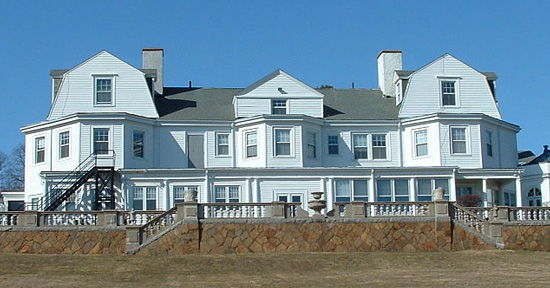Will Catholic Colleges Learn From Marian Court’s Closing?

“We hide the word ‘Catholic’ from prospective students.” So said a staff member at Jesuit Regis University in a widely-read Atlantic article last year. Sadly, such an approach to marketing is no anomaly among Catholic colleges and universities, many of which are filling seats with students whose focus is on practical concerns and secular interests but not Catholic formation.
Small Catholic institutions, however, do the greatest harm to themselves by downplaying what makes them unique. They lack the resources of universities with top-notch facilities and dozens of majors to choose from. Without hearing a strong case for Catholic education, many high schoolers are left wondering why they would ever attend a small, liberal arts college.
Small colleges may be tempted to downplay Catholic identity with the intent of finding a bigger pool of students. But institutions that go down this road find a market with more competitors (there are 572 liberal arts colleges in the U.S., most of them non-Catholic), and they end up sacrificing their key competitive advantage.
Consider Marian Court College in Swampscott, Mass., which will close at the end of June due to financial difficulties and falling enrollment. In preparing my report on the closure for The Cardinal Newman Society, I interviewed leaders at Marian Court and more successful, small Catholic colleges, finding that Marian Court might have benefitted from a more robust celebration of its Catholic identity.
Marian Court’s website reveals few signs of the institution’s Catholic identity. The home page includes no mention of “Catholic” or even the College’s founding religious order, the Sisters of Mercy. You have to look hard to find any religious imagery, the presence of which seems accidental. The student life page describes the campus chapel as “a place for reflection” at which students “of all faiths are invited to participate,” but no Mass or confession times are published.
Downplaying Catholic identity is a widespread problem among Catholic higher education institutions. A study published a few years ago in the journal Catholic Education looked at the websites of all 206 Catholic colleges and universities in the U.S., searching for clear and unambiguous emphasis on Catholic identity. The results were shocking. More than 60 percent of institutions “did not use the qualifier ‘Catholic’ on their home pages.”
When asked what role its Catholic identity actually played in attracting much-needed students, Marian Court President Dr. Denise Hammon told me the Catholic identity helped somewhat. “I don’t think it was the published words of ‘We are a Catholic institution,’ but it was how we teach here and how we treat each other that attracted people,” she said. “And we did it in the good faith of the Catholic religion.”
Hammon also described the main characteristics that the College promoted to attract students—business and criminal justice programs, support for commuting students, and more—but the attributes of the faithful Catholic identity that families and students have come to expect at Catholic institutions like Christendom College in Front Royal, Va., were not mentioned.
Tom McFadden, who heads up enrollment efforts at Christendom, told me, “We are an educational apostolate with the mission of educating students in a time-tested Catholic liberal arts education, in a vibrant Catholic culture, so that they can go out into the world and restore all things in Christ.” The College’s enrollment has increased 17 percent in recent years, and it credits its strong Catholic identity with attracting students from far outside its geographical region.
Thomas Aquinas College in Santa Paula, Calif., is another deliberately small and successful Catholic institution that boldly proclaims its Catholic identity. A visit to the College website immediately presents the TAC tagline, “Truth Matters.” And there are many Catholic-themed articles, including ones about alumni vocations, a profile with the chaplain, and the College’s connection to Archbishop Fulton Sheen.
TAC’s college relations director, Anne Forsyth, notes that the College “has an established reputation for its strong Catholic identity and that is one of the strongest attractions for prospective students.”
A coherent mission based on Catholic identity is an attraction to many students, but it also has the added benefit of creating institutional stability—which becomes all the more important in a financially challenging environment.
McFadden explained how at Christendom, “Having a clear mission and buy-in from our employees is very beneficial and helps us retain our employees, which in turn gives us stability. Because we are not changing who we are and we are sticking to our original purpose, it also helps show our donors, alumni, and friends that we are stable.”
Catholic colleges and universities have the opportunity to rediscover their mission by drawing closer to “the heart of the Church,” to borrow a phrase from Pope St. John Paul II. The more they are able to articulate that mission to Catholic families and prospective students, the less they might risk getting lost in the crowd.










